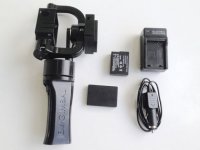cordvision
Plastic
- Joined
- Jun 24, 2014
- Location
- CA, USA
Hello
I want to mill my own sprue bushings for injection molding or mill the channel for the sprue directly into the my prototype molds. I therefore need to mill/drill small tapered holes. The starting diameter will be ca. 1.5mm and then have a 1-3 degree taper (end diameter is larger than starting diameter). The holes will have to be 20-50mm deep.
I know, that I could just buy pre fabricated sprue bushings, but I want to try making them myself so I can make cheap prototype molds. Usually this is done via EDM wire cutting, but I was hopping there would be a way to do this on a 3-axis mill.
So far, I couldn't really find any small tapered drill, any idea where to get them? Not sure if I should drill straight holes and then use a tapered reamer? Any suggestions on that, and does anybody know who sells small tapered reamers?
Any other way I could achieve my goal? All suggestions are welcome.
I want to mill my own sprue bushings for injection molding or mill the channel for the sprue directly into the my prototype molds. I therefore need to mill/drill small tapered holes. The starting diameter will be ca. 1.5mm and then have a 1-3 degree taper (end diameter is larger than starting diameter). The holes will have to be 20-50mm deep.
I know, that I could just buy pre fabricated sprue bushings, but I want to try making them myself so I can make cheap prototype molds. Usually this is done via EDM wire cutting, but I was hopping there would be a way to do this on a 3-axis mill.
So far, I couldn't really find any small tapered drill, any idea where to get them? Not sure if I should drill straight holes and then use a tapered reamer? Any suggestions on that, and does anybody know who sells small tapered reamers?
Any other way I could achieve my goal? All suggestions are welcome.


